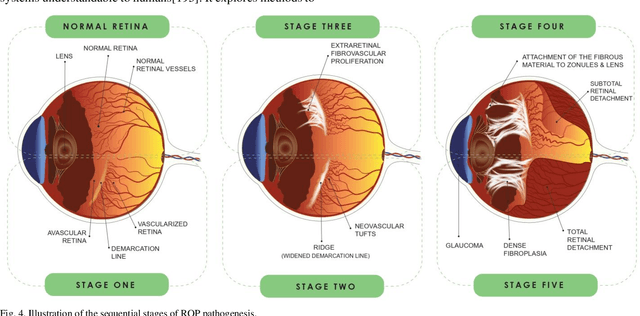Current and future roles of artificial intelligence in retinopathy of prematurity
Paper and Code
Feb 15, 2024



Retinopathy of prematurity (ROP) is a severe condition affecting premature infants, leading to abnormal retinal blood vessel growth, retinal detachment, and potential blindness. While semi-automated systems have been used in the past to diagnose ROP-related plus disease by quantifying retinal vessel features, traditional machine learning (ML) models face challenges like accuracy and overfitting. Recent advancements in deep learning (DL), especially convolutional neural networks (CNNs), have significantly improved ROP detection and classification. The i-ROP deep learning (i-ROP-DL) system also shows promise in detecting plus disease, offering reliable ROP diagnosis potential. This research comprehensively examines the contemporary progress and challenges associated with using retinal imaging and artificial intelligence (AI) to detect ROP, offering valuable insights that can guide further investigation in this domain. Based on 89 original studies in this field (out of 1487 studies that were comprehensively reviewed), we concluded that traditional methods for ROP diagnosis suffer from subjectivity and manual analysis, leading to inconsistent clinical decisions. AI holds great promise for improving ROP management. This review explores AI's potential in ROP detection, classification, diagnosis, and prognosis.
 Add to Chrome
Add to Chrome Add to Firefox
Add to Firefox Add to Edge
Add to Edge